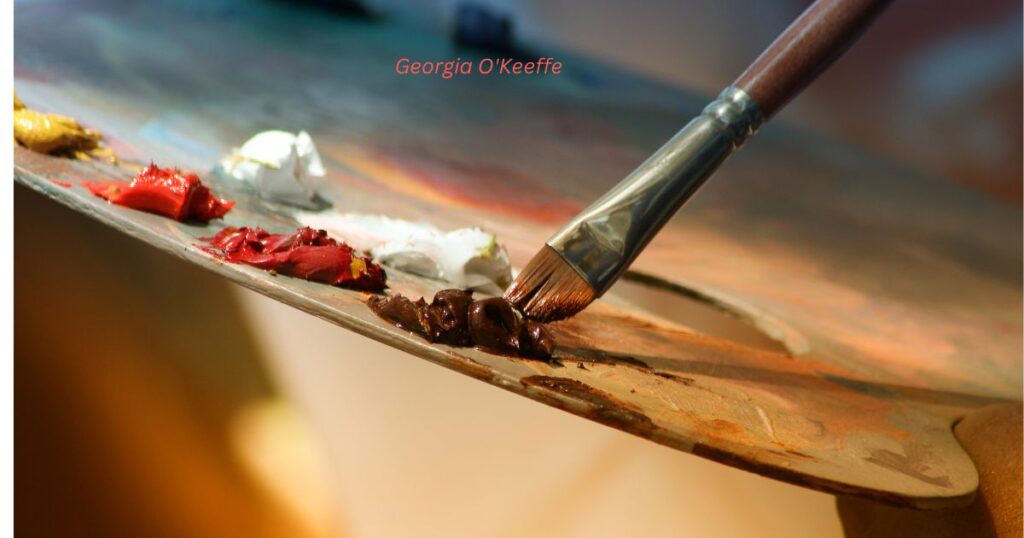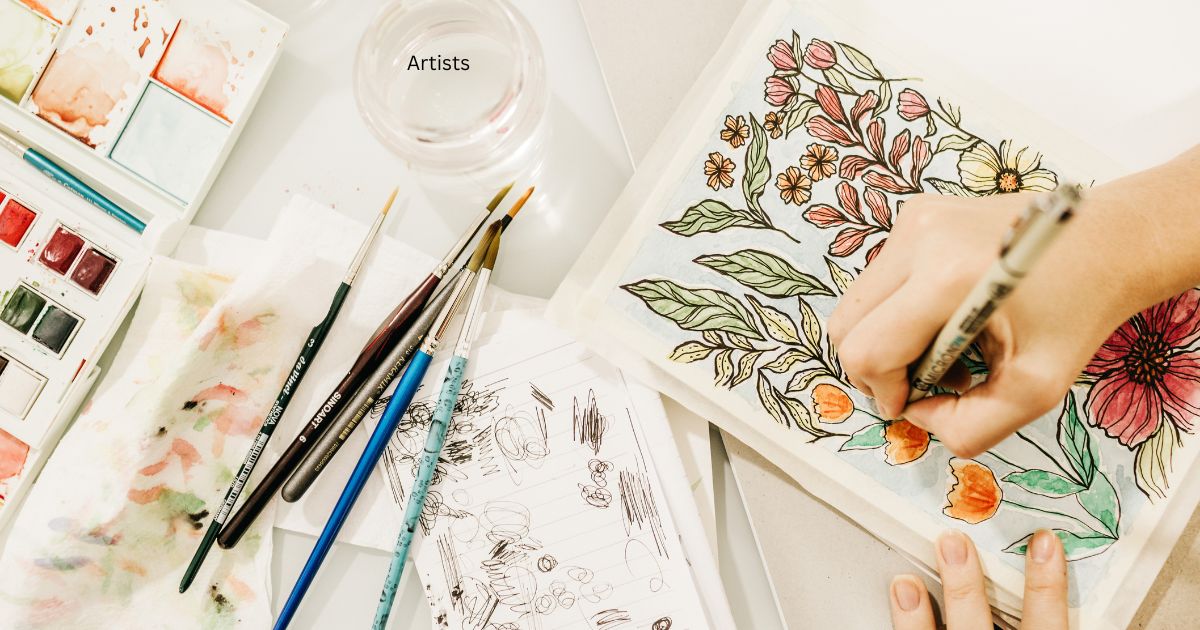Art has the energy to inspire, provoke idea, or even rework societies. Throughout statistics, many artists have left indelible marks on the world through their creativity and innovation. In this article, we are capable of find out 20 Inspirational Artists You Must Know:
Their Transformative Impact on Art! From the Renaissance to present day instances, those artists have changed the panorama of art and keep to steer generations.
Key Takeaway
- Diverse Mediums: Artists precise themselves via numerous mediums, which encompass portray, sculpture, pictures, and virtual art.
- Cultural Influence: Many artists have drawn perception from their cultural backgrounds, reflecting societal troubles of their art work.
- Innovative Techniques: Techniques and patterns have evolved, with a few artists pushing boundaries to create new styles of expression.
- Social Change: Art often displays social changes, making many artists pivotal figures in actions for justice and equality.
1. Leonardo da Vinci: The Quintessential Renaissance Man
Leonardo da Vinci changed into no longer just a painter; he became a polymath. Hi
s works, inclusive of the Mona Lisa and The Last Supper, showcased his mastery of human emotion and realism. Da Vinci’s techniques in chiaroscuro (the usage of mild and shadow) transformed painting, allowing for extra actual looking representations.
His sketches and medical observations also laid the muse for future upgrades in paintings and science.
2. Frida Kahlo: The Voice of Identity and Pain
Frida Kahlo’s unique fashion, deeply motivated by way of her Mexican heritage and private struggles, offers a uncooked portrayal of identity, ache, and the human revel in. Her self-photos invite visitors into her global, exploring problems of gender, post-colonialism, and identification.
Kahlo’s paintings keeps to inspire limitless artists, especially girls, highlighting the significance of personal narratives in artwork.
3. Pablo Picasso: The Innovator of Cubism
Pablo Picasso’s introduction of Cubism changed the manner we perceive art. By breaking topics into geometric shapes and a couple of viewpoints, he encouraged visitors to look beyond traditional example.
His innovative technique opened the door for abstraction in modern artwork and challenged traditional notions of shape and attitude.
4. Jackson Pollock: The Master of Abstract Expressionism

Jackson Pollock’s drip artwork embodied the spirit of summary expressionism.
His chaotic yet intentional strategies broke away from conventional techniques, emphasizing the act of portray itself. Pollock’s work invitations traffic to interact emotionally, allowing for private interpretations of his chaotic beauty.
5. Yayoi Kusama: The Infinite Journey
Yayoi Kusama’s use of polka dots and infinity rooms has created a completely unique area in modern-day paintings. Her installations discover issues of intellectual health, identity, and the endless nature of lifestyles.
Kusama’s art work encourages traffic to confront their inner selves, fostering a connection among artwork and personal revel in.
6. Ai Weiwei: The Voice of Resistance
Chinese artist Ai Weiwei is thought for his provocative artwork that demanding situations political and social issues. His installations and activism highlight human rights abuses, censorship, and the refugee disaster.
Weiwei’s paintings serves as a powerful reminder of the artist’s position as a social commentator and activist.
7. Georgia O’Keeffe: The Mother of Modernism

Georgia O’Keeffe is widely known for her iconic flower paintings and barren vicinity landscapes. Her exploration of abstraction and natural paperwork redefined femininity in art work.
O’Keeffe’s specific vision invites traffic to recognise nature’s splendor and the energy of abstraction in conveying emotion.
8. Banksy: The Anonymity of Street Art
Banksy’s street art has end up synonymous with social commentary and political activism. Through satire and humor, his art work addresses problems like consumerism, warfare, and social inequality.
Banksy’s anonymity offers an exciting layer to his art, inviting conversations approximately the function of the artist in society.
9. Claude Monet: The Master of Light
Monet, a primary parent in Impressionism, revolutionized the paintings international with the resource of shooting the essence of mild and colour.
His focus on landscapes and herbal scenes invitations visitors to experience fleeting moments in time. Monet’s strategies laid the premise for future moves, emphasizing perception over realism.
10. Cindy Sherman: Challenging Identity and Representation
Cindy Sherman’s pictures stressful situations traditional notions of identification and gender roles. Through her self-graphics, she explores the idea of the ‘female gaze’ and societal expectancies.
Sherman’s work encourages visitors to impeach the development of identification and the location of media in shaping notion.
11. Salvador Dalí: The Surreal Dreamer
Salvador Dalí’s surrealist paintings delve into the subconscious mind, mixing goals and fact. His super style and weird imagery invite visitors to discover the complexities of the human psyche.
Dalí’s paintings has significantly stimulated every artwork and well-known manner of life, making him a key figure in surrealism.
12. Jean-Michel Basquiat: The Neo-Expressionist Visionary
Jean-Michel Basquiat’s art shows his research as a Black man in America, addressing race, identification, and social problems.
His expressive style and use of textual content deliver powerful messages about inequality and way of life. Basquiat’s paintings maintains to resonate, making him a pivotal discern in modern art.
13. Marina Abramović: The Body as Art
Marina Abramović is a pioneer of overall performance artwork, the use of her body as a medium for expression. Her art work explores topics of staying electricity, vulnerability, and the relationship amongst artist and audience.
Abramović’s performances undertaking visitors to confront their feelings and engage with the art in profound ways.
14. Henri Matisse: The Colorist
Henri Matisse’s colorful use of colour and bold shapes set up him as a frontrunner in contemporary artwork. His exploration of form and coloration invites emotional responses from traffic.
Matisse’s legacy continues to persuade artists looking for to supply emotion via color and abstraction.
15. Damien Hirst: The Provocateur
Damien Hirst’s provocative works venture perceptions of art and demise. His use of unconventional substances, like preserved animals, invitations discussions approximately mortality and beauty.
Hirst’s arguable technique has made him a widespread figure in modern-day art, pushing barriers and igniting debate.
16. Keith Haring: The Activist Artist
Keith Haring’s colorful street art is rooted in activism, addressing problems like AIDS recognition, LGBTQ+ rights, and social justice. His work is characterized thru bold traces and colourful hues, making it reachable and impactful.
Haring’s legacy lives on through his dedication to social change and ingenious expression.
17. Andy Warhol: The King of Pop Art
Andy Warhol’s exploration of consumerism and celebrity life-style redefined the boundaries of art work. His use of repetition and mass manufacturing challenged traditional notions of creative value. Warhol’s affect maintains to shape cutting-edge art work and subculture, making him an iconic decide inside the art work global.
18. Roy Lichtenstein: Comic Book Aesthetic
Roy Lichtenstein’s paintings, characterised with the resource of his comic ebook style, challenged the distinctions among quality artwork and well-known manner of lifestyles. His use of Ben-Day dots and formidable shades created a brand new seen language.
Lichtenstein’s artwork invitations site visitors to reconsider the importance of famous imagery within the context of fantastic art.
19. Louise Bourgeois: The Psychological Sculptor
Louise Bourgeois’s sculptures discover issues of femininity, trauma, and memory. Her use of unconventional substances invitations deep emotional engagement from visitors.
Bourgeois’s art work addresses non-public and regular testimonies, making her a sizable figure in feminist artwork.
20. Takashi Murakami: Blending Cultures
Takashi Murakami’s fusion of conventional Japanese paintings with present day popular subculture creates a completely unique aesthetic. His colorful, cartoonish style demanding situations obstacles and celebrates the intersection of high and coffee artwork.
Murakami’s impact extends past art work into style and design, making him a global cultural icon.
Comparison Table
| Artist | Movement | Key Themes | Notable Work |
|---|---|---|---|
| Leonardo da Vinci | Renaissance | Humanism, Nature | Mona Lisa |
| Vincent van Gogh | Post-Impressionism | Emotion, Color | Starry Night |
| Frida Kahlo | Surrealism | Identity, Pain | The Two Fridas |
| Pablo Picasso | Cubism | Abstraction, Politics | Guernica |
| Georgia O’Keeffe | Modernism | Nature, Abstraction | Black Iris |
| Andy Warhol | Pop Art | Consumerism, Fame | Campbell’s Soup Cans |
| Banksy | Street Art | Social Commentary | Girl with Balloon |
| Yayoi Kusama | Contemporary Art | Infinity, Self | Infinity Mirror Rooms |
| Ai Weiwei | Contemporary Art | Activism, Freedom | Sunflower Seeds |
| Jean-Michel Basquiat | Neo-Expressionism | Race, Identity | Untitled (1981) |
| Gustav Klimt | Symbolism | Love, Intimacy | The Kiss |
| Keith Haring | Graffiti/Street Art | Life, Activism | Radiant Baby |
| Claude Monet | Impressionism | Light, Nature | Water Lilies |
| Salvador Dalí | Surrealism | Dreams, Reality | The Persistence of Memory |
| Henri Matisse | Fauvism | Color, Joy | The Dance |
| Artemisia Gentileschi | Baroque | Gender, Power | Judith Slaying Holofernes |
| Cindy Sherman | Conceptual Art | Identity, Representation | Untitled Film Stills |
| Chuck Close | Photorealism | Portraiture, Process | Big Self-Portrait |
| Richard Serra | Minimalism | Space, Perception | Tilted Arc |
| Tracey Emin | Contemporary Art | Personal Narrative | My Bed |
FAQs
1. Why is art crucial?
Art is important as it reflects human studies, feelings, and cultures. It allows individuals to precise themselves and might provoke belief, encourage trade, and foster know-how.
2. How can I analyze more about those artists?
You can learn greater with the aid of the usage of visiting museums, analyzing books approximately their lives and works, or exploring on line assets and documentaries that delve into their innovative contributions.
3. What effect does art work have on society?
Art can boom awareness approximately social issues, project norms, and encourage movements. It frequently serves as a replicate reflecting societal values and adjustments.
4. Are there modern-day artists who hold to encourage?
Yes, many modern-day-day artists maintain to push obstacles and inspire thru their modern works, addressing current issues along side weather trade, identity, and social justice.
5. How do artists have an effect on every special?
Artists frequently draw idea from each different’s styles, strategies, and ideas, important to collaborations and the evolution of latest moves inside the artwork global.
By exploring the 20 Inspirational Artists You Must Know: Their Transformative Impact on Art!, we will appreciate the profound strategies in which art maintains to shape our expertise of ourselves and the arena spherical us.
Conclusion
The world of artwork is tremendous and numerous, with each artist contributing to a rich tapestry of tradition and innovation.
The 20 Inspirational Artists You Must Know: Their Transformative Impact on Art! Have no longer best fashioned their respective moves but have moreover endorsed societal perceptions of paintings itself.
From the emotional depth of Frida Kahlo to the social commentary of Banksy, those artists invite us to discover, query, and recognize the arena spherical us.










